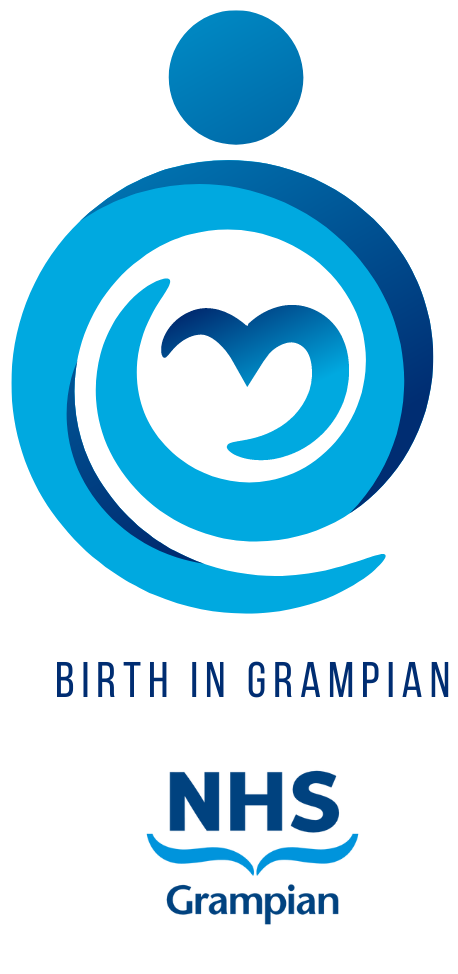Contents
Choosing a Homebirth
There are many reasons you may choose to give birth at home and anyone can choose to have their baby at home. You do not need to have a big home or anything additional to choose a homebirth. If you are considering having your baby at home you can discuss this with your midwife at any stage during your pregnancy, they will be happy to answer any questions you may have to help you make a choice that feels right for you and your family.
The Royal College of Midwives and the Royal College of Obstetricians and Gynaecologists support home birth for women with uncomplicated pregnancies and suggest it may have considerable benefits for them and their families. If you’re at an increased risk of complications you may be advised to give birth on the labour ward but it’s still worth discussing your options with your midwife as the choice is yours. Wherever you choose, the place should feel right for you.
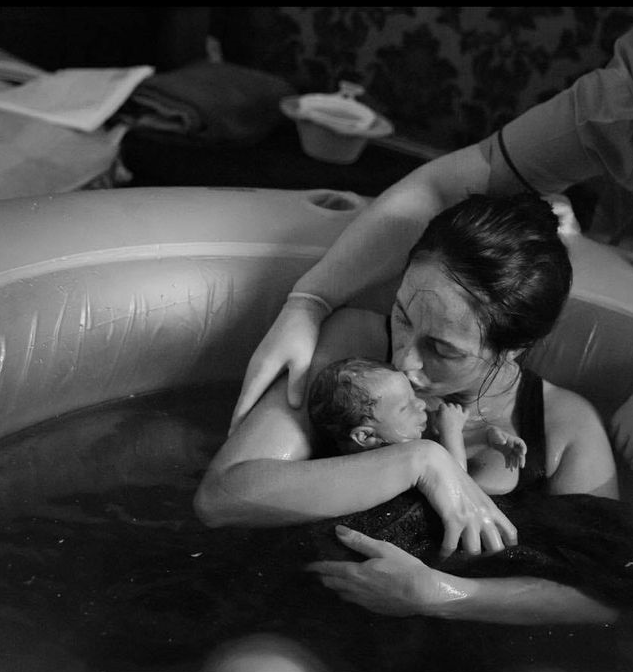
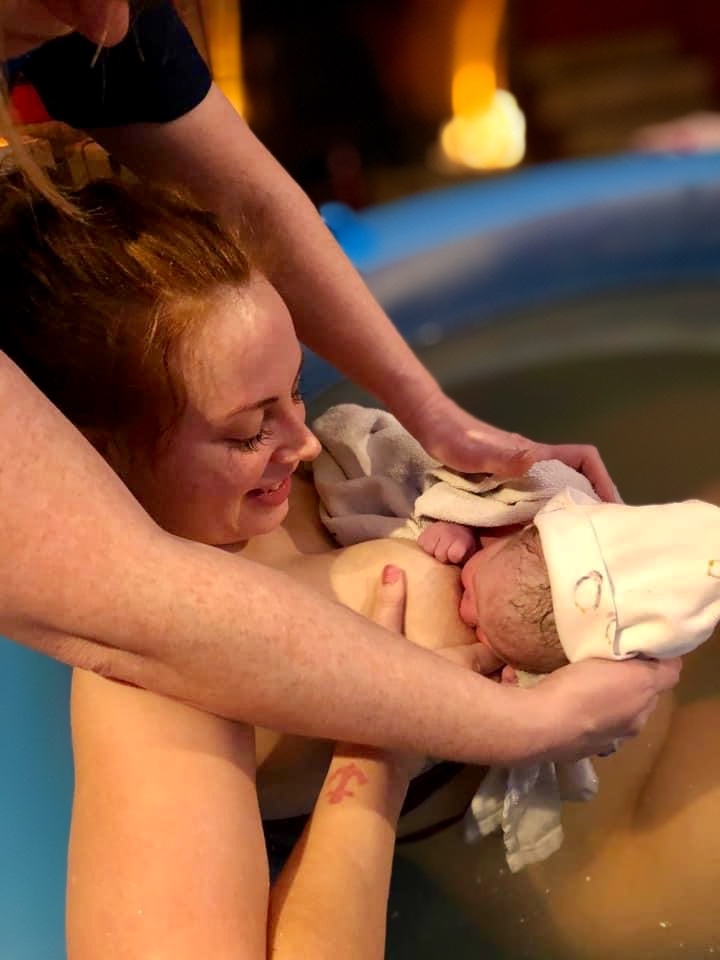
What does the research say?
Research and national guidance have shown that for women who have a straightforward pregnancy, giving birth at home is a safe option and one which also carries many benefits. The 2011 birthplace study, which reviewed 62,000 pregnant women, showed that home births are as safe as hospital birth for second and subsequent babies in low risk pregnancies. First time mothers may also choose a home birth but there is a greater chance you may need to be transferred during labour to hospital. The study found the transfer rate was 45% for planned home birth for first time mothers and 12% for planned home births for women having a second or subsequent baby.
Research has also shown that home birth is as safe as giving birth in hospital for babies born to women in their second or subsequent pregnancy (with 2 per 1000 (0.2%) of babies having a poor outcome. There is a slightly higher rate of poor outcomes for babies born to first time mothers at home compared to in hospital or in a birth unit, around 9 per 1000 (0.9%) at home compared to 5 per 1000 (0.5%) in hospital or birth unit.
A recent research study was carried out which found that among low-risk women, those intending to birth at home experienced fewer birth interventions and untoward maternal outcomes. The study looked at the outcomes of half a million mothers which compared the outcomes among low risk women who began labour, planning to give birth at home with those who planned to birth in hospital. The study found that overall, those who planned to give birth at home were less likely to experience any of the intrapartum interventions studied (caesarean section, operative vaginal birth, epidural analgesia, episiotomy, and oxytocin augmentation). They were also less likely to suffer a 3rd or 4th degree perineal tear, maternal infection or postpartum haemorrhage. These results were shown to be regardless of where the birth actually happened. So even if the mother required transfer to hospital, they were still more likely to have improved outcomes.
How do I prepare for a homebirth?
If you are thinking you would like a homebirth you should discuss this with your midwife at any point in your pregnancy. Your midwife will visit your home and discuss your birth wishes and offer any support and advice that will help you as you prepare for the arrival of your baby.
Your midwife will discuss with you a plan for when you would like for the midwives to be ‘on-call’ for your birth. The team can cover from 37 weeks gestation until the birth of your baby, there is not cut off date.
You don’t need much for a homebirth, just some clean towels for you and your baby. Some women also like to have basic coverings for their bed or sofa. You may wish to think about a room within your home where you wish to have your baby and if you are considering using water for pain relief in labour or to give birth to your baby in water, you may wish to hire a birthing pool or buy one.
Your midwife will organise all the equipment that may be needed when supporting you at home, such as Oxygen and Entonox (Gas and Air) cylinders, emergency equipment and any medications. This equipment will be delivered to your house prior to the on call starting.
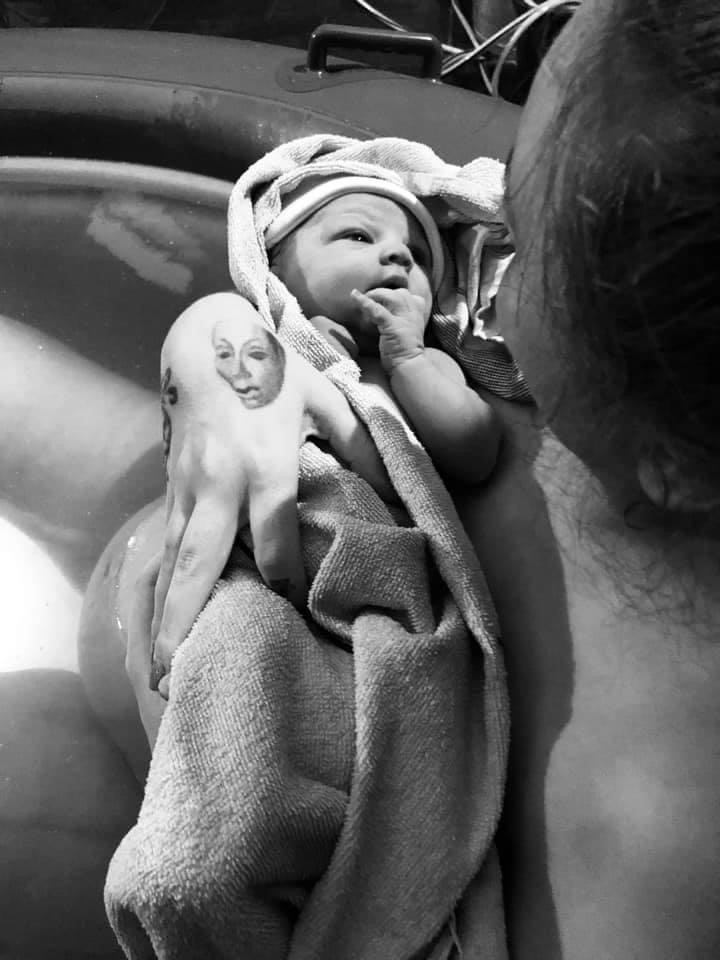
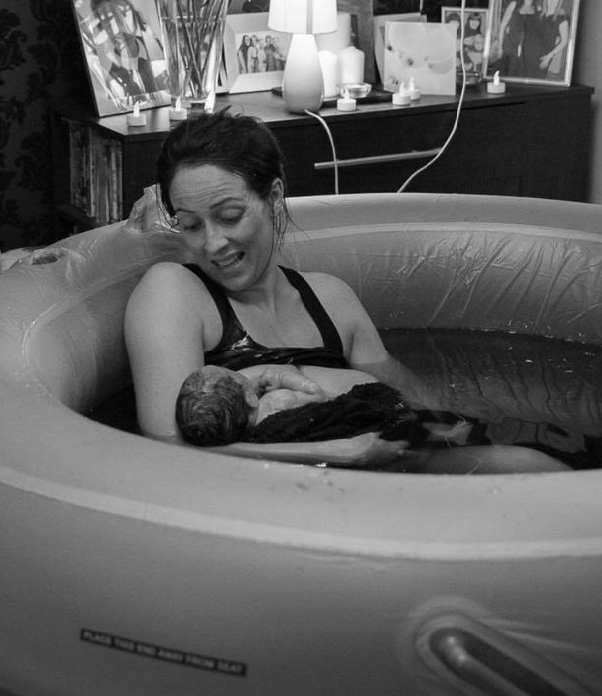
What happens when I go into labour?
When you go into labour you will have been provided with a phone number to call so that you can speak to one of the midwives who are ‘on call’. The midwife will discuss a plan with you to assess and review you at home. If you have planned for a home birth but you change your mind about where you wish to give birth, either during pregnancy or whilst in labour, you are free to do so and your midwife will support your decision.
You will be cared for by a midwife at the start of your labour and a second midwife will also attend when labour starts to progress.
Pain relief options at home
At your home birth, you will have several cylinders of Entonox (Gas & Air) delivered to your home and available for you to use during labour. You also have the option of requesting a prescription of Morphine from your GP practice. There are other pain relief options that you can organise yourself such as the use of a birthing pool, hiring or purchasing a TENs machine, using a birthing ball, having a warm bath/shower & gentle massage.
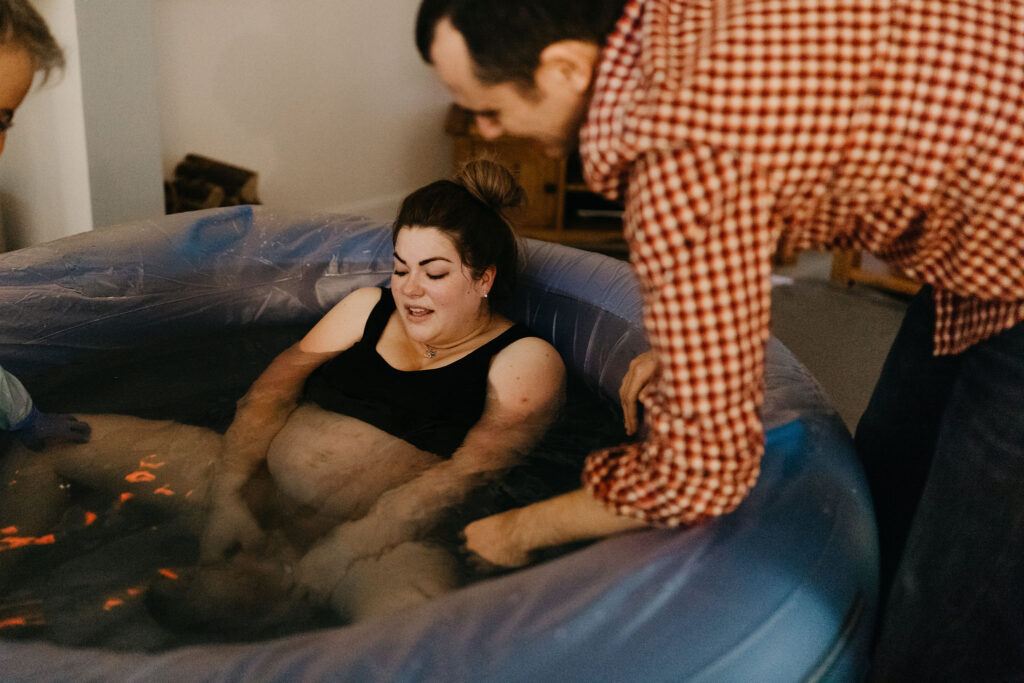
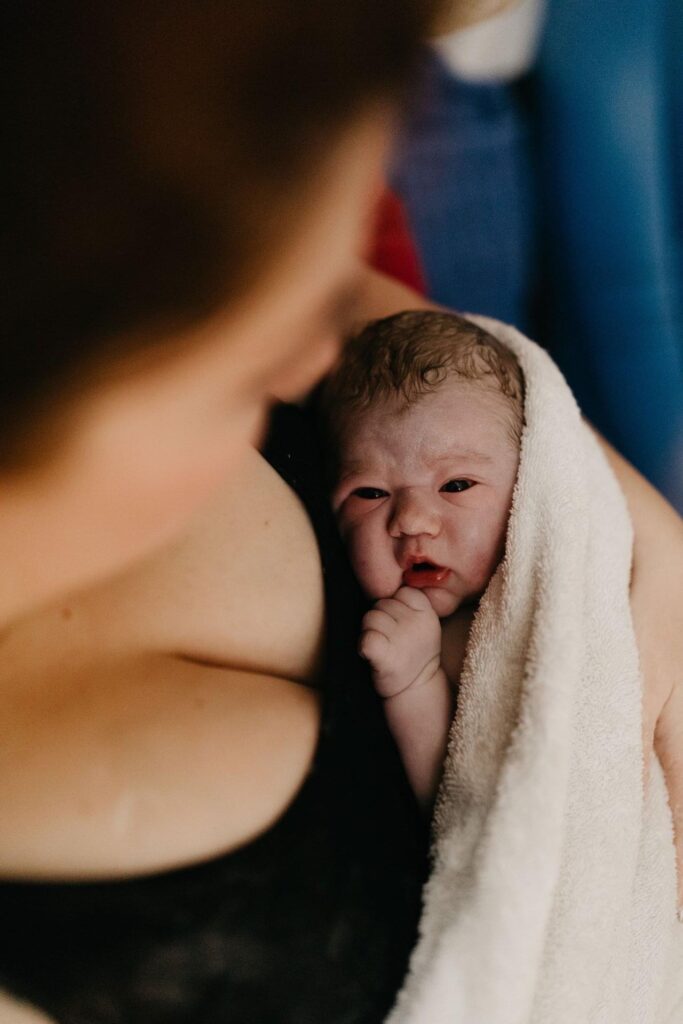
What happens if I need transferred to hospital?
Midwives can provide ‘low risk’ care in your home. You would be supported through labour and birth by a midwife. If you or your baby required any additional care from any specialists or any complications were to arise during or shortly after the birth of your baby, your midwife would recommend that you transfer to the Obstetric Unit (Labour Ward) at Aberdeen Maternity Hospital for ongoing care.
Transfer to this level of care would be by ambulance. There are a number of reasons transfer to hospital might be advised. You can find out more information on transfers in labour by clicking the below link.
What happens after the baby is born?
After you have given birth to your baby the midwives will ensure you and your baby are well. They will provide help with the birth of the placenta and remove it from your home should you wish, along with any other clinical waste. Your baby will be weighed and have an initial examination and you will also be offered support with your baby’s first feed. The midwives will stay for approximately a few hours after you have had your baby.
The next day you will receive postnatal care from the midwifery team, until a handover to the Health visiting team (usually around 10 days). You will be provided with a phone number to call should you have any concerns before your first postnatal visit the following day.
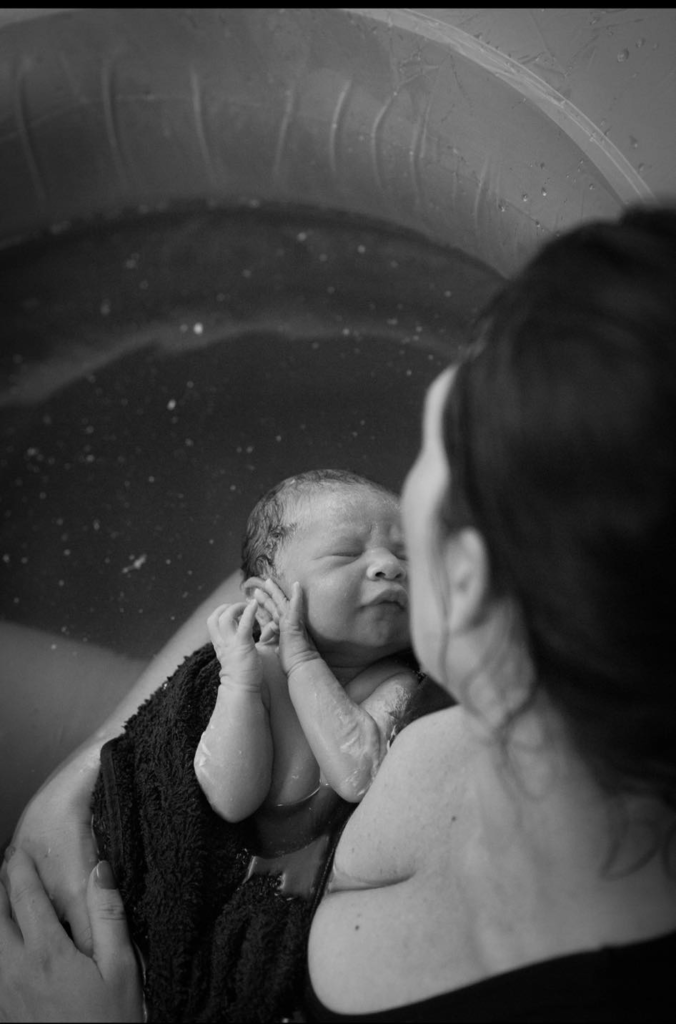
The pictures on this page have been kindly shared by mums who have given birth at home here in Grampian.
If you wish more information or you think homebirth is the right choice for you please speak to your midwife.
